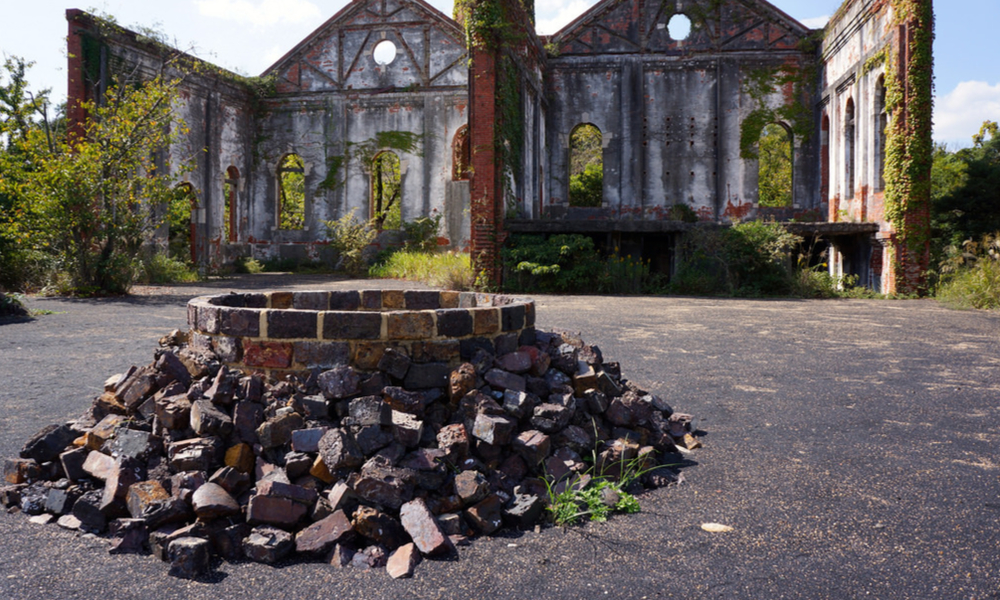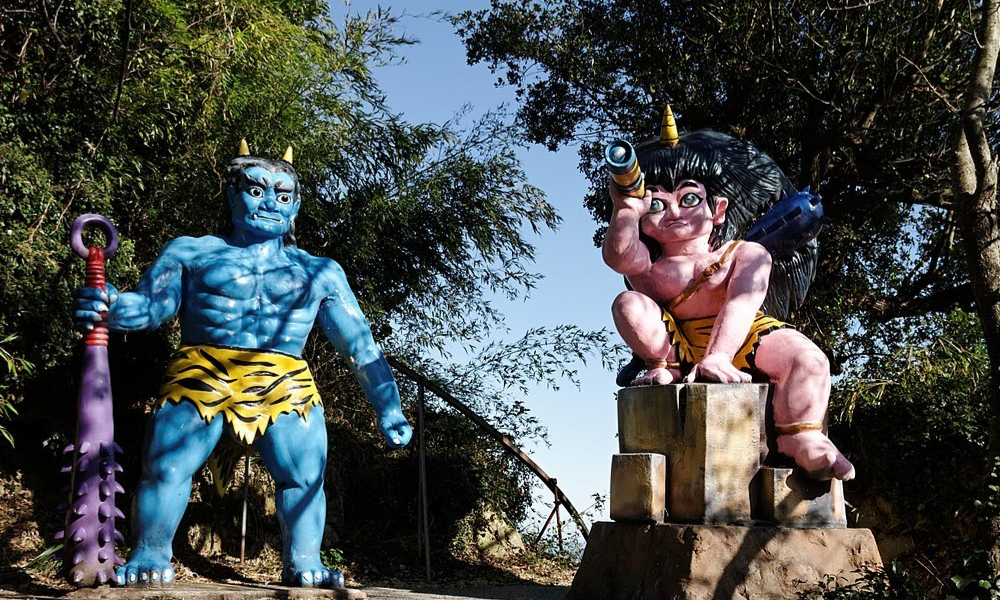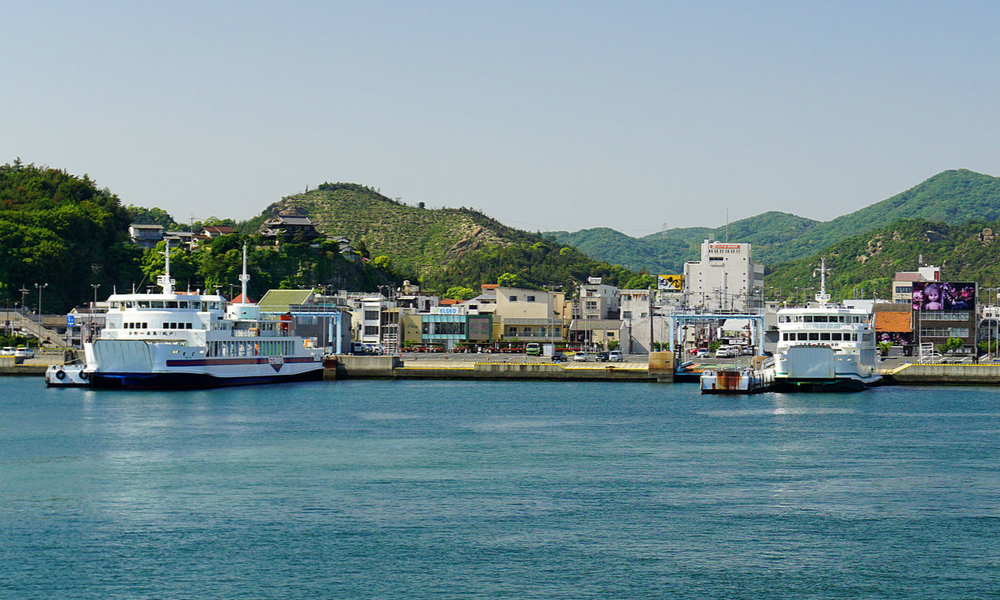
Cycling around Kyoto's Higashiyama(Shimogamo jinja, Ginkakuji temple, Nanzenji temple, Gion etc.)
This area is well-known about its jam-up, since thousands of tourists visit at all times of the year. Resulted in overcrowded buses and even if you are luckily get in, the bus may not move forward.
There are so many bus services provided by several companies which makes you confused. Yet people surround you maybe also tourists like you who know little about the area.
Let’s not waste your time reading maps, waiting for buses, and traffic jams.
After we leave Kyoto station, we will guide you several places: Kyoto Gyoen National Garden, Shimogamo jinja, Ginkakuji temple, Tetsugaku-no-michi Street (the philosophers' path), Eikando, and Nanzenji temple. We continue pedaling to Gion area then the most lively area of Kyoto, Sanjyo and Shijyo-kawaramachi.
You can either drop the bike at the place where the tour ends or keep pedaling until Kyoto station.
★You can find this tour also on TripAdvisor and Viator!
Discover our excursions from Kyoto
Contact us here
Overview
This area is well-known about its jam-up, since thousands of tourists visit at all times of the year. Resulted in overcrowded buses and even if you are luckily get in, the bus may not move forward.
There are so many bus services provided by several companies which makes you confused. Yet people surround you maybe also tourists like you who know little about the area.
Let’s not waste your time reading maps, waiting for buses, and traffic jams.
After we leave Kyoto station, we will guide you several places: Kyoto Gyoen National Garden, Shimogamo jinja, Ginkakuji temple, Tetsugaku-no-michi Street (the philosophers' path), Eikando, and Nanzenji temple. We continue pedaling to Gion area then the most lively area of Kyoto, Sanjyo and Shijyo-kawaramachi.
You can either drop the bike at the place where the tour ends or keep pedaling until Kyoto station.
★You can find this tour also on TripAdvisor and Viator!
Discover our excursions from Kyoto
Contact us here
Itinerary ↓↓ The tour will take you to ↓↓
Kyoto Gyoen National Park - Shimogamo jinjya (enter) - Ginkakuji temple (enter)- Tetsugaku-no-michi Street (strolling the path and lunch) - Nanzenji temple - Shirakawa bridge - Shirakawa river - Shinbashidori street - Sanjyo ohashi bridge - Kawaracho area (drop the bike, afoot afterward) - Kiya cho, Ponto cho, and Gion area
Yasaka jinja, breakup at Maruyama park
*One who wants to visit Kiyomizu temple, a guide will take you there
★Meeting place:Kyoto station(in the case of a private tour, it is possible to deliver a bike to each hotel.)
★Meeting time:9:00
★Duration:approx. 8 hours
★Points of the tour:
- English-speaking Japanese guide
- Small group tour (private guided tours available)
- Hybrid bike with 7 speeds
- Bike of your choice with extra charge: VTC (+300 yen), with electric assistance (+700 yen)
- Entrance fees included for: Shimogamo jinja Shrine, Ginkaku ji Temple, Eikando Temple, others are excluded
- Lunch included
- Cross the must-visit Higashiyama site in Kyoto.
Shimogamo jinja (the world heritage)
Ride on about 20 minutes inside Kyotogosho then arrive the Shimogamo jinja.

The history of the shrine can go back to B.C. 90 as a legend tells that ritual events has taken place before the introduction of Buddhism into Japan.
It is the one of the few prestigious shrines which allow to practice Shikinen Sengu, the system of reconstruction, all shrines in the Shimogamo complex are meant to be rebuilt every 21 years. However, the building is no longer able to be destroyed once registered in the world heritage, but able to be renovated partially every 21 years. The present buildings was renovated in 2015; for such occasions, we can see it in good condition.
The temple surrounded by huge primordial woods where is believed longmai running (feng shui) and it illuminates the spot as the power spot (places with full of spiritual energy).
Also the temple is known as the gods of the beauty that calls for female visitors. The source comes from Tamayorihime-no-mikoto, a woman of great beauty, is enshrined in the main sanctuary of the shrine.
Ginkakuji temple (the world heritage)

The temple is often considered as a counterpart of Kinkakuji temple, formal name is Rokuonji temple, located in the western area of Kyoto.
Both of the Kinkakuji and the Ginkakuji are constructed in 15th century by shoguns’ orders on the purpose of their second houses.
As contrasted with the Kinkakuji covered by kinpaku (gold leaf) as its name indicated, Ginkakuji has calm atmosphere that reminds Wabisabi (Japanese traditional kind of beauty, leaving space intentionally for interpretation by a viewer).
The Kinkakuji rebuilt recently as it is burnt out in 1950 due to a fire-setting whereas the Ginkakuji retains the atmosphere of the era when it was built and surrounded by beautiful garden on a slope which harmonized well with the dark wooden walls.
You will get into the sprit of the landscape that heals the Shoguns’ anxiety.


Lunch: Udon (Japanese thick noodle) set menu
After a walk to Ginkakuji temple, we will have lunch in a 50-year-old restaurant at the entrance of the Tetsugaku-no-michi Street. Hope you enjoy a dish of Udon (Japanese thick noodle) with seasonal ingredients in the good old Japanese style.


-Philosophers' path

Nanzenji temple


Its main portal is two layer structure called "San mon", one of Kyoto's three main portals, with a height of 22 meters, the view from its highest level is spectacular. The Hojo (the abbot's quarters) is a national treasure and has been transferred from the former royal palace.
You will find a breathtaking beauty in a so-called Karesansui garden (a type of dry garden often made of simple stones) view from the edge of the eaves between the fusuma (sliding opaque screen with a handle used to redefine the space of a door in the traditional Japanese home).



Gion Shirakawa area


Nowadays, the area from Yasaka Shrine to the Kamogawa River is called Gion; however, there is no precise definition.
Above all, the area of the northern part of Shirakawa, where the Biwa Lake canal sector and the Kamogawa River crossed is classified as the Preservation District for Groups of Historic Buildings. There are many Ochaya established in the Edo period, literally cafeteria but actually the place where one dines in the presence of Maiko and Geiko, in the district.
Downtown area -Ponto cho, Kiya cho, Kawara cho
When you arrive in this downtown area, you can drop your bike to change to the walk. (Otherwise you can keep your bike until 8pm or you can return it at the Kyoto Station.)
 先斗町通り
先斗町通り 木屋町通り
木屋町通り 河原町通り
河原町通りThe first street parallel to the Kamogawa River is called Ponto cho Street, which like Gion, is made up of many Ochaya. The street is too narrow for vehicles to get in. The street survived the fire occurred in the nineteenth century, and retains its atmosphere of yesteryear where many lanterns lit at night to illuminate shops across the street. It is a place where you can take beautiful pictures.
Gion -Hanami koji, Yasaka sanctuary



The northern part has been developed as a commercial district since Meiji period and there are many multiple-tenant buildings. On the other hand, the southern part preserves the old landscape and many efforts are made to maintain its conservation. You will find exclusive traditional beauty in Kyoto: such as Ochaya, luxury restaurants, and Kabu-renjyo.
The streets with the slatted doors and the late bamboo blinds give the neighborhood atmosphere a serene elegance.
If you see the maiko and geiko during the day, it may be tourists dressed the same way; but, if it's evening, you'll have the chance to see the real maikos and geikos.

- ※ Kiyomizu-dera Temple (World Heritage, under construction)

It is one of Kyoto's cultural properties and one of the most popular sites in Kyoto. The access path to the temple is a steep path physically. Since the site is forbidden to park the bike, we will park near the entrance and walk up to the temple.
The main building of the temple is classified as the national heritage. It is famous for its platform called "Kiyomizu Butai" with a height of 12 meters. This is a wooden building built without a single nail. It has been renovating since 2008 and currently renovating the roof of the main building as the last stage. So the building is fully covered now.The roof area is 2,000 square meters and the repair dutifully obeys to the original construction methods, scheduled for complation in March 2020.
Even though we can visit the interior of the main building and the dojo as well as the Otowa waterfall, the Nioomon gate, and the three-storey pagoda within the temple enclosure.




Where to Go





Itinerary
Itinerary ↓↓ The tour will take you to ↓↓
Kyoto Gyoen National Park - Shimogamo jinjya (enter) - Ginkakuji temple (enter)- Tetsugaku-no-michi Street (strolling the path and lunch) - Nanzenji temple - Shirakawa bridge - Shirakawa river - Shinbashidori street - Sanjyo ohashi bridge - Kawaracho area (drop the bike, afoot afterward) - Kiya cho, Ponto cho, and Gion area
Yasaka jinja, breakup at Maruyama park
*One who wants to visit Kiyomizu temple, a guide will take you there
★Meeting place:Kyoto station(in the case of a private tour, it is possible to deliver a bike to each hotel.)
★Meeting time:9:00
★Duration:approx. 8 hours
★Points of the tour:
- English-speaking Japanese guide
- Small group tour (private guided tours available)
- Hybrid bike with 7 speeds
- Bike of your choice with extra charge: VTC (+300 yen), with electric assistance (+700 yen)
- Entrance fees included for: Shimogamo jinja Shrine, Ginkaku ji Temple, Eikando Temple, others are excluded
- Lunch included
- Cross the must-visit Higashiyama site in Kyoto.
Shimogamo jinja (the world heritage)
Ride on about 20 minutes inside Kyotogosho then arrive the Shimogamo jinja.

The history of the shrine can go back to B.C. 90 as a legend tells that ritual events has taken place before the introduction of Buddhism into Japan.
It is the one of the few prestigious shrines which allow to practice Shikinen Sengu, the system of reconstruction, all shrines in the Shimogamo complex are meant to be rebuilt every 21 years. However, the building is no longer able to be destroyed once registered in the world heritage, but able to be renovated partially every 21 years. The present buildings was renovated in 2015; for such occasions, we can see it in good condition.
The temple surrounded by huge primordial woods where is believed longmai running (feng shui) and it illuminates the spot as the power spot (places with full of spiritual energy).
Also the temple is known as the gods of the beauty that calls for female visitors. The source comes from Tamayorihime-no-mikoto, a woman of great beauty, is enshrined in the main sanctuary of the shrine.
Ginkakuji temple (the world heritage)

The temple is often considered as a counterpart of Kinkakuji temple, formal name is Rokuonji temple, located in the western area of Kyoto.
Both of the Kinkakuji and the Ginkakuji are constructed in 15th century by shoguns’ orders on the purpose of their second houses.
As contrasted with the Kinkakuji covered by kinpaku (gold leaf) as its name indicated, Ginkakuji has calm atmosphere that reminds Wabisabi (Japanese traditional kind of beauty, leaving space intentionally for interpretation by a viewer).
The Kinkakuji rebuilt recently as it is burnt out in 1950 due to a fire-setting whereas the Ginkakuji retains the atmosphere of the era when it was built and surrounded by beautiful garden on a slope which harmonized well with the dark wooden walls.
You will get into the sprit of the landscape that heals the Shoguns’ anxiety.


Lunch: Udon (Japanese thick noodle) set menu
After a walk to Ginkakuji temple, we will have lunch in a 50-year-old restaurant at the entrance of the Tetsugaku-no-michi Street. Hope you enjoy a dish of Udon (Japanese thick noodle) with seasonal ingredients in the good old Japanese style.


-Philosophers' path

Nanzenji temple


Its main portal is two layer structure called "San mon", one of Kyoto's three main portals, with a height of 22 meters, the view from its highest level is spectacular. The Hojo (the abbot's quarters) is a national treasure and has been transferred from the former royal palace.
You will find a breathtaking beauty in a so-called Karesansui garden (a type of dry garden often made of simple stones) view from the edge of the eaves between the fusuma (sliding opaque screen with a handle used to redefine the space of a door in the traditional Japanese home).



Gion Shirakawa area


Nowadays, the area from Yasaka Shrine to the Kamogawa River is called Gion; however, there is no precise definition.
Above all, the area of the northern part of Shirakawa, where the Biwa Lake canal sector and the Kamogawa River crossed is classified as the Preservation District for Groups of Historic Buildings. There are many Ochaya established in the Edo period, literally cafeteria but actually the place where one dines in the presence of Maiko and Geiko, in the district.
Downtown area -Ponto cho, Kiya cho, Kawara cho
When you arrive in this downtown area, you can drop your bike to change to the walk. (Otherwise you can keep your bike until 8pm or you can return it at the Kyoto Station.)
 先斗町通り
先斗町通り 木屋町通り
木屋町通り 河原町通り
河原町通りThe first street parallel to the Kamogawa River is called Ponto cho Street, which like Gion, is made up of many Ochaya. The street is too narrow for vehicles to get in. The street survived the fire occurred in the nineteenth century, and retains its atmosphere of yesteryear where many lanterns lit at night to illuminate shops across the street. It is a place where you can take beautiful pictures.
Gion -Hanami koji, Yasaka sanctuary



The northern part has been developed as a commercial district since Meiji period and there are many multiple-tenant buildings. On the other hand, the southern part preserves the old landscape and many efforts are made to maintain its conservation. You will find exclusive traditional beauty in Kyoto: such as Ochaya, luxury restaurants, and Kabu-renjyo.
The streets with the slatted doors and the late bamboo blinds give the neighborhood atmosphere a serene elegance.
If you see the maiko and geiko during the day, it may be tourists dressed the same way; but, if it's evening, you'll have the chance to see the real maikos and geikos.

- ※ Kiyomizu-dera Temple (World Heritage, under construction)

It is one of Kyoto's cultural properties and one of the most popular sites in Kyoto. The access path to the temple is a steep path physically. Since the site is forbidden to park the bike, we will park near the entrance and walk up to the temple.
The main building of the temple is classified as the national heritage. It is famous for its platform called "Kiyomizu Butai" with a height of 12 meters. This is a wooden building built without a single nail. It has been renovating since 2008 and currently renovating the roof of the main building as the last stage. So the building is fully covered now.The roof area is 2,000 square meters and the repair dutifully obeys to the original construction methods, scheduled for complation in March 2020.
Even though we can visit the interior of the main building and the dojo as well as the Otowa waterfall, the Nioomon gate, and the three-storey pagoda within the temple enclosure.




| Important to know |
|
| Additional informations |
|
| Included |
|
| Not included |
|


 Seto Inland Sea
Seto Inland Sea East area
East area Naoshima
Naoshima Shodoshima
Shodoshima Teshima
Teshima Inujima
Inujima Megijima
Megijima Ogijima
Ogijima Honjima
Honjima Awashima
Awashima Takamishima
Takamishima Shishijima
Shishijima Ushimado
Ushimado Manabeshima
Manabeshima Takamatsu
Takamatsu Ieshima
Ieshima Kobe
Kobe Uno
Uno West area
West area Miyajima
Miyajima Hiroshima
Hiroshima Around Shimanami Kaido
Around Shimanami Kaido Onomichi
Onomichi Okunojima
Okunojima Omishima
Omishima Osakishimojima
Osakishimojima Ikuchijima
Ikuchijima Bareboat Charter
Bareboat Charter Crewed Charter
Crewed Charter Sailing Boat
Sailing Boat Cabin charter
Cabin charter  Yacht charter
Yacht charter Motor Boat
Motor Boat Our Fleet
Our Fleet Suggested Cruises
Suggested Cruises ¥399,000〜
¥399,000〜